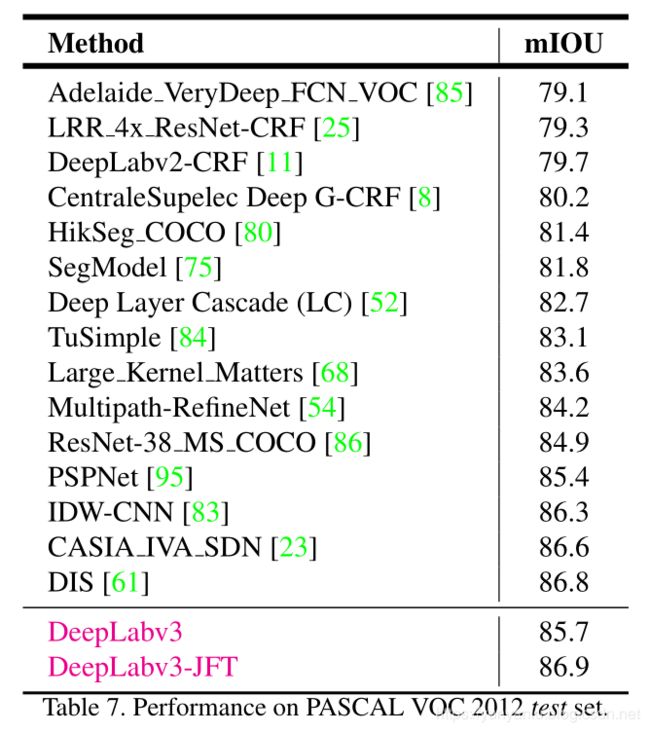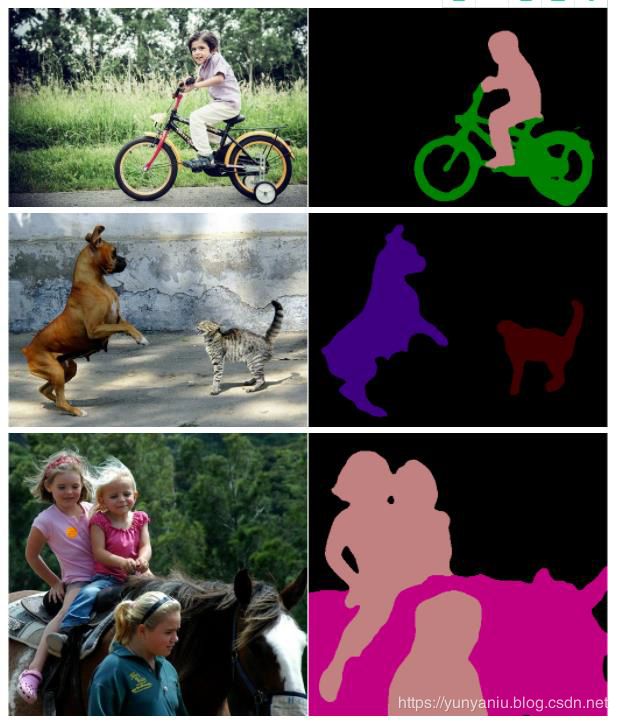- AOP在哪些场景下可能会失效?
爱学习的小熊猫_
javaspringspringbootAOP事务
AOP一般在哪些场景下可能会失效?定义:AOP动态代理在Spring中主要通过JDK动态代理(基于接口)和CGLIB代理(基于继承)实现,但在以下场景中可能失效,导致拦截失败:一、失效场景及原理分析1.类内部方法调用(最常见)场景:@ServicepublicclassUserService{publicvoidmethodA(){methodB();//内部调用→AOP失效}@Transacti
- 【嵌入式电机控制#15】电流闭环控制(二):电流采样
Cyber耐提克
嵌入式电机控制系统电机控制嵌入式系统控制算法单片机
代码解析(1)main.c中ADC的DMA中断回调voidHAL_ADC_ConvCpltCallback(ADC_HandleTypeDef*hadc){__IOuint16_tConvCnt=0;__IOint32_tADConv=0;//这里其实没必要用IO定义,变量与外设寄存器无直接交互HAL_ADC_Stop_DMA(hadc);//注意:对于信号传递速度极快的DMA,即使你用了HT中断
- 051-OpenCV GrabCut图像分割算法
话不多说,上代码,看结果。importcv2#导入库importnumpyasnp'''cv2.imread(filename,flags)#filename为文件名,图片与.py文件在一个文件夹时输入文件名即可#不在一个文件夹时输入图片的路径和名字#flags为图片的颜色类型,默认为1,灰度图像为0'''img=cv2.imread('89.jpg')mask=np.zeros(img.shap
- 利用Windows .NET特性和Unicode规范化漏洞攻击DNN (DotNetNuke)
sechub
windows.netdnn
概述DNN(前身为DotNetNuke)是2003年建立的最古老的开源内容管理系统之一,使用C#(.NET)编写,由活跃的爱好者社区维护。它也被企业广泛使用。漏洞背景CVE-2017-9822历史案例我们熟悉这项技术是因为CVE-2017-9822,该漏洞允许通过DNNPersonalizationcookie的不安全反序列化进行远程代码执行(RCE)。这个CVE一直是反序列化攻击的绝佳案例研究。
- opencv常用函数汇总
Sky.Kevin
opencv计算机视觉
一、色彩空间类型转换1、cv2.cvtColordst=cv2.cvtColor(src,code[,dstCn])式中:dst表示输出图像,与原始输入图像具有同样的数据类型和深度。src表示原始输入图像。可以是8位无符号图像、16位无符号图像,或者单精度浮点数等。code是色彩空间转换码,表4-2展示了其枚举值。dstCn是目标图像的通道数。如果参数为默认的0,则通道数自动通过原始输入图像和co
- Android7以上的手机通过fiddler抓包
春暖花开จุ๊บL
fiddler前端测试工具
设置以及安装步骤0,要求手机要先root1,安装fiddler,不赘述。不熟悉的可以安装中文版。fiddler中文版下载地址,并且把fiddler的证书文件导出到桌面上。2,安装windows版本的openssl。下载地址:OpenSSL下载地址记录好安装路径。3,到openssl的安装路径\bin目录下。shift+右键运行命令行。把fiddler的证书文件剪切到bin目录下。命令行执行open
- 【FFmpeg】AVIOContext结构体
【FFmpeg】AVIOContext结构体1.AVIOContext结构体的定义参考:FFMPEG结构体分析:AVIOContext示例工程:【FFmpeg】调用ffmpeg库实现264软编【FFmpeg】调用ffmpeg库实现264软解【FFmpeg】调用ffmpeg库进行RTMP推流和拉流【FFmpeg】调用ffmpeg库进行SDL2解码后渲染流程分析:【FFmpeg】编码链路上主要函数的简
- python ffmpeg pipe_如何使用python从ffmpeg输出管道?
weixin_39611725
pythonffmpegpipe
我正在尝试将FFmpeg的输出用管道输送到Python中。我正在从一个视频采集卡读取图像,我成功地使用dshow从命令行将其读入输出文件。我正在尝试从卡抓取图像到我的OpenCv代码,以便能够进一步处理数据。不幸的是,当我通过管道输出图像时,我只得到视频的显示,如链接所示:link:s000.tinyupload.com/?file_id=15940665795196022618.我使用的代码如下
- python ffmpeg pipe,管道的ffmpeg的输入和输出在python
呼呼啦啦就瘸了
pythonffmpegpipe
I'musingffmpegtocreateavideo,fromalistofbase64encodedimagesthatIpipeintoffmpeg.Outputtingtoafile(usingtheattachedcodebelow)worksperfectly,butwhatIwouldliketoachieveistogettheoutputtoaPythonvariableins
- MySQL大表DDL方式对比
三思呐三思
MySQLOnlineDDLgh-ostpt-oscMySQLDDL
文章目录一、原生DDL、OnlineDDL1.1Onlineddl操作原理1.2DDL操作的两个参数1.3OnlineDDL操作空间存储的要求二、pt-online-schema-change2.1pt-osc的大致流程:2.2pt-osc的特点2.3使用pt-osc的约束2.4操作示例三、gh-ost3.1gh-ost的三种模式3.2gh-ost的特点3.3使用gh-ost的约束线上环境的大表D
- Java双重检测锁解决MySQL和Redis数据一致性问题
Java双重检测锁解决MySQL和Redis数据一致性问题双重检测锁(Double-CheckedLocking)是一种在多线程环境下优化性能的设计模式,可以用于解决MySQL和Redis之间的数据一致性问题。下面我将介绍如何实现这一方案。问题背景在MySQL和Redis双存储系统中,常见的一致性问题包括:缓存穿透:查询不存在的数据,导致每次请求都打到数据库缓存击穿:热点key失效瞬间,大量请求直
- C# 开发与 Allen-Bradley PLC 的 EtherNet/IP 通讯接口
威哥说编程
c#tcp/ip开发语言
一、背景与动机Allen-Bradley是RockwellAutomation的核心自动化品牌,其PLC(ProgrammableLogicController)广泛应用于工业自动化领域。Allen-Bradley控制器支持通过EtherNet/IP(IndustrialProtocol)进行通信,这是一种基于工业以太网的开放协议。在工业信息化过程中,越来越多的系统需要将SCADA、MES或自定义
- Logger日志记录
Kiri霧
开发语言androidjavakotlin
Java日志记录简介日志是软件应用程序中的记录信息,我们可以选择将其保存到文件中,或显示在控制台上。这些记录可以描述任何内容:程序中的一个事件、变量的值、错误或异常等。日志主要用于调试目的。今天,我们将学习Java标准SDK中用于日志记录的java.util.logging包。要使用Java的日志功能,你需要了解以下几个组件:LoggerFileHandlerConsoleHandlerSimpl
- MySQL Online DDL详解:从历史演进到原理及使用
SHENKEM
mysql
本文介绍了MySQLOnlineDDL的发展历史,包括各个版本的改进,重点讲解了Copy和Inplace算法,以及OnlineDDL过程中的锁策略。还分析了DDL操作的需求、MySQL5.7和8.0的功能特点,以及使用限制和注意事项。摘要生成于C知道,由DeepSeek-R1满血版支持,前往体验>❃博主首页:「码到三十五」,同名公众号:「码到三十五」,wx号:「liwu0213」☠博主专栏:♝博主
- 金属表面划痕检测实践指南 - 使用OpenCV
IYA1738
本文还有配套的精品资源,点击获取简介:在机器视觉领域,表面划痕检测是一项关键技术,特别是在金属表面。本文深入探索了如何使用OpenCV库在VisualStudio2019环境下进行表面划痕检测。主要技术包括图像作差、动态阈值处理、边缘检测以及形态学操作。通过这些方法,我们可以有效地从金属表面图像中提取划痕特征。本文详细描述了实施表面划痕检测的步骤,包括图像读取、差分图像计算、阈值处理、边缘检测优化
- 双检锁(Double-Checked Locking)单例模式
在项目中使用双检锁(Double-CheckedLocking)单例模式来管理JSON格式化处理对象(如`ObjectMapper`在Jackson库中,或`JsonParser`在Gson库中)是一种常见的做法。这种模式确保了对象只被创建一次,同时在多线程环境下也能保证线程安全。下面详细介绍这种模式的实现和优势。###双检锁单例模式的实现双检锁单例模式的核心思想是在创建对象时使用两次检查(“检锁
- opencv 4.12.0版本发布详解:核心优化与新特性全解析
Risehuxyc
#opencvopencv人工智能计算机视觉
OpenCV4.12.0夏季更新带来核心模块优化、图像处理增强、深度学习支持扩展及新兴硬件适配,全面提升计算机视觉开发效率与性能。引言OpenCV(开源计算机视觉库)作为计算机视觉领域最受欢迎的开源库之一,在2025年7月发布了4.12.0版本。这个夏季更新带来了大量性能优化、新功能和错误修复,覆盖了核心模块、图像处理、3D校准、深度学习等多个领域。本文将详细介绍OpenCV4.12.0的主要更新
- 基于Opencv的工业缺陷检测/C++版本
Deeeil
opencvc++人工智能
找工作过程中发现要求会C++的工业检测,用一个项目熟悉整个流程#include#include#include//定义一个结构体来存储缺陷信息structDefect{inttype;//缺陷类型,1代表划痕,2代表污渍intx;//缺陷的x坐标inty;//缺陷的y坐标intwidth;//缺陷的宽度intheight;//缺陷的高度//构造函数,初始化缺陷信息Defect(intt,intx,
- 使用 C++ 和 OpenCV 进行表面划痕检测
whoarethenext
c++opencv开发语言划痕检测
使用C++和OpenCV进行表面划痕检测在工业自动化生产中,产品表面的质量控制至关重要。划痕作为一种常见的表面缺陷,其检测是许多领域(如金属、玻璃、塑料制造)质量保证流程中的一个关键环节。本文将介绍如何使用C++和强大的计算机视觉库OpenCV来实现一个基本的表面划痕检测算法。核心思路划痕通常在图像中表现为具有以下一个或多个特征的区域:高对比度的线性结构:划痕区域的像素强度通常会与其周围背景有明显
- Camera相机人脸识别系列专题分析之十五:人脸特征检测FFD算法之libcvface_api.so算法API详细注释解析
一起搞IT吧
数码相机android人工智能图像处理计算机视觉算法
【关注我,后续持续新增专题博文,谢谢!!!】上一篇我们讲了:这一篇我们开始讲:Camera相机人脸识别系列专题分析之十五:人脸特征检测FFD算法之libcvface_api.so算法API详细注释解析目录一、libcvface_api.so算法API详细注释解析<
- ROS2 视频采集节点实现
ZPC8210
ROS音视频
一个完整的ROS2视频采集节点的实现,使用OpenCV进行视频捕获并通过ROS2发布图像消息。1.创建功能包首先创建一个新的ROS2功能包(如果还没有):bashros2pkgcreatevideo_capture--build-typeament_python--dependenciesrclpysensor_msgscv_bridgeopencv-python2.实现视频采集节点在video_
- ROS2 通过相机确定物品坐标位置
要实现通过相机确定物品坐标位置,通常需要相机标定、物体检测和坐标转换几个步骤。下面我将提供一个完整的解决方案,包括相机标定、物体检测和3D坐标估计。1.系统架构相机标定-获取相机内参和畸变系数物体检测-使用OpenCV或深度学习模型检测物品坐标转换-将2D图像坐标转换为3D世界坐标ROS2集成-将上述功能集成到ROS2节点中2.实现步骤2.1创建功能包bashros2pkgcreateobject
- LinkedList集合源码解析
小北m
java
LinkedList集合LinkedList是一个基于双向链表实现的集合类LinkedList实现了以下接口:List:表明它是一个列表,支持添加、删除、查找等操作,并且可以通过下标进行访问。Deque:继承自Queue接口,具有双端队列的特性,支持从两端插入和删除元素,方便实现栈和队列等数据结构。Cloneable:表明它具有拷贝能力,可以进行深拷贝或浅拷贝操作。Serializable:表明它
- OpenCV特征点提取算法orb、surf、sift对比
点云SLAM
图形图像处理ORB算法SIFT算法人工智能计算机视觉算法
下面是OpenCV中三种常用特征点提取算法:ORB、SURF和SIFT的详细对比,从算法原理、性能、使用限制和适用场景多维度进行总结,帮助大家在实际项目中合理选择。一览表:ORBvs.SURFvs.SIFT属性/算法ORBSURFSIFT全称OrientedFASTandRotatedBRIEFSpeededUpRobustFeaturesScale-InvariantFeatureTransfo
- 机器视觉通用平台之点直线距离算法UI
小治视觉
算法uivisualstudioc#windows
usingCvBase;usingCWindowTool;usingHalconDotNet;usingSystem;usingSystem.Collections.Generic;usingSystem.ComponentModel;usingSystem.Data;usingSystem.Diagnostics;usingSystem.Drawing;usingSystem.Linq;usin
- 机器视觉通用平台之点点距离算法工具类
usingCvBase;usingCWindowTool;usingSystem;usingSystem.Collections.Generic;usingSystem.Linq;usingSystem.Text;usingSystem.Threading.Tasks;usingHalconDotNet;usingNewtonsoft.Json;usingSystem.IO;namespaceCv
- 机器视觉通用平台之点轮廓距离算法工具类
小治视觉
c#算法visualstudiowindowsui
usingCvBase;usingCWindowTool;usingHalconDotNet;usingSystem;usingSystem.Collections.Generic;usingSystem.IO;usingSystem.Linq;usingSystem.Text;usingSystem.Threading.Tasks;namespaceCvImageTool.DistancePC{
- 机器视觉通用平台之线线距离算法UI
小治视觉
算法uiwindowsvisualstudioc#
usingCvBase;usingCWindowTool;usingHalconDotNet;usingSystem;usingSystem.Collections.Generic;usingSystem.ComponentModel;usingSystem.Data;usingSystem.Diagnostics;usingSystem.Drawing;usingSystem.Linq;usin
- 【HDLBits习题详解 2】Circuit - Sequential Logic(5)Finite State Machines 【更新中...】
薄荷雪
fpga开发
1.Fsm1(SimpleFSM1-asynchronousreset)moduletop_module#(parameterA=0;parameterB=1;),(outputregout,inputclk,inputareset,inputin);regstate,next_state;//Outputlogic//assignout=(state==...);assignout=;alway
- P1526 [NOI2003] 智破连环阵 (如果不想登录复制可打开 https://www.luogu.com.cn/team/106732 进入我的团队,有问题可以问我)
题目描述B国在耗资百亿元之后终于研究出了新式武器——连环阵(ZenithProtectedLinkedHybridZone)。传说中,连环阵是一种永不停滞的自发性智能武器。但经过A国间谍的侦察发现,连环阵其实是由M个编号为1,2,…,M的独立武器组成的。最初,1号武器发挥着攻击作用,其他武器都处在无敌自卫状态。以后,一旦第i(1≤iusingnamespacestd;//Starttypedefl
- Js函数返回值
_wy_
jsreturn
一、返回控制与函数结果,语法为:return 表达式;作用: 结束函数执行,返回调用函数,而且把表达式的值作为函数的结果 二、返回控制语法为:return;作用: 结束函数执行,返回调用函数,而且把undefined作为函数的结果 在大多数情况下,为事件处理函数返回false,可以防止默认的事件行为.例如,默认情况下点击一个<a>元素,页面会跳转到该元素href属性
- MySQL 的 char 与 varchar
bylijinnan
mysql
今天发现,create table 时,MySQL 4.1有时会把 char 自动转换成 varchar
测试举例:
CREATE TABLE `varcharLessThan4` (
`lastName` varchar(3)
) ;
mysql> desc varcharLessThan4;
+----------+---------+------+-
- Quartz——TriggerListener和JobListener
eksliang
TriggerListenerJobListenerquartz
转载请出自出处:http://eksliang.iteye.com/blog/2208624 一.概述
listener是一个监听器对象,用于监听scheduler中发生的事件,然后执行相应的操作;你可能已经猜到了,TriggerListeners接受与trigger相关的事件,JobListeners接受与jobs相关的事件。
二.JobListener监听器
j
- oracle层次查询
18289753290
oracle;层次查询;树查询
.oracle层次查询(connect by)
oracle的emp表中包含了一列mgr指出谁是雇员的经理,由于经理也是雇员,所以经理的信息也存储在emp表中。这样emp表就是一个自引用表,表中的mgr列是一个自引用列,它指向emp表中的empno列,mgr表示一个员工的管理者,
select empno,mgr,ename,sal from e
- 通过反射把map中的属性赋值到实体类bean对象中
酷的飞上天空
javaee泛型类型转换
使用过struts2后感觉最方便的就是这个框架能自动把表单的参数赋值到action里面的对象中
但现在主要使用Spring框架的MVC,虽然也有@ModelAttribute可以使用但是明显感觉不方便。
好吧,那就自己再造一个轮子吧。
原理都知道,就是利用反射进行字段的赋值,下面贴代码
主要类如下:
import java.lang.reflect.Field;
imp
- SAP HANA数据存储:传统硬盘的瓶颈问题
蓝儿唯美
HANA
SAPHANA平台有各种各样的应用场景,这也意味着客户的实施方法有许多种选择,关键是如何挑选最适合他们需求的实施方案。
在 《Implementing SAP HANA》这本书中,介绍了SAP平台在现实场景中的运作原理,并给出了实施建议和成功案例供参考。本系列文章节选自《Implementing SAP HANA》,介绍了行存储和列存储的各自特点,以及SAP HANA的数据存储方式如何提升空间压
- Java Socket 多线程实现文件传输
随便小屋
javasocket
高级操作系统作业,让用Socket实现文件传输,有些代码也是在网上找的,写的不好,如果大家能用就用上。
客户端类:
package edu.logic.client;
import java.io.BufferedInputStream;
import java.io.Buffered
- java初学者路径
aijuans
java
学习Java有没有什么捷径?要想学好Java,首先要知道Java的大致分类。自从Sun推出Java以来,就力图使之无所不包,所以Java发展到现在,按应用来分主要分为三大块:J2SE,J2ME和J2EE,这也就是Sun ONE(Open Net Environment)体系。J2SE就是Java2的标准版,主要用于桌面应用软件的编程;J2ME主要应用于嵌入是系统开发,如手机和PDA的编程;J2EE
- APP推广
aoyouzi
APP推广
一,免费篇
1,APP推荐类网站自主推荐
最美应用、酷安网、DEMO8、木蚂蚁发现频道等,如果产品独特新颖,还能获取最美应用的评测推荐。PS:推荐简单。只要产品有趣好玩,用户会自主分享传播。例如足迹APP在最美应用推荐一次,几天用户暴增将服务器击垮。
2,各大应用商店首发合作
老实盯着排期,多给应用市场官方负责人献殷勤。
3,论坛贴吧推广
百度知道,百度贴吧,猫扑论坛,天涯社区,豆瓣(
- JSP转发与重定向
百合不是茶
jspservletJava Webjsp转发
在servlet和jsp中我们经常需要请求,这时就需要用到转发和重定向;
转发包括;forward和include
例子;forwrad转发; 将请求装法给reg.html页面
关键代码;
req.getRequestDispatcher("reg.html
- web.xml之jsp-config
bijian1013
javaweb.xmlservletjsp-config
1.作用:主要用于设定JSP页面的相关配置。
2.常见定义:
<jsp-config>
<taglib>
<taglib-uri>URI(定义TLD文件的URI,JSP页面的tablib命令可以经由此URI获取到TLD文件)</tablib-uri>
<taglib-location>
TLD文件所在的位置
- JSF2.2 ViewScoped Using CDI
sunjing
CDIJSF 2.2ViewScoped
JSF 2.0 introduced annotation @ViewScoped; A bean annotated with this scope maintained its state as long as the user stays on the same view(reloads or navigation - no intervening views). One problem w
- 【分布式数据一致性二】Zookeeper数据读写一致性
bit1129
zookeeper
很多文档说Zookeeper是强一致性保证,事实不然。关于一致性模型请参考http://bit1129.iteye.com/blog/2155336
Zookeeper的数据同步协议
Zookeeper采用称为Quorum Based Protocol的数据同步协议。假如Zookeeper集群有N台Zookeeper服务器(N通常取奇数,3台能够满足数据可靠性同时
- Java开发笔记
白糖_
java开发
1、Map<key,value>的remove方法只能识别相同类型的key值
Map<Integer,String> map = new HashMap<Integer,String>();
map.put(1,"a");
map.put(2,"b");
map.put(3,"c"
- 图片黑色阴影
bozch
图片
.event{ padding:0; width:460px; min-width: 460px; border:0px solid #e4e4e4; height: 350px; min-heig
- 编程之美-饮料供货-动态规划
bylijinnan
动态规划
import java.util.Arrays;
import java.util.Random;
public class BeverageSupply {
/**
* 编程之美 饮料供货
* 设Opt(V’,i)表示从i到n-1种饮料中,总容量为V’的方案中,满意度之和的最大值。
* 那么递归式就应该是:Opt(V’,i)=max{ k * Hi+Op
- ajax大参数(大数据)提交性能分析
chenbowen00
WebAjax框架浏览器prototype
近期在项目中发现如下一个问题
项目中有个提交现场事件的功能,该功能主要是在web客户端保存现场数据(主要有截屏,终端日志等信息)然后提交到服务器上方便我们分析定位问题。客户在使用该功能的过程中反应点击提交后反应很慢,大概要等10到20秒的时间浏览器才能操作,期间页面不响应事件。
根据客户描述分析了下的代码流程,很简单,主要通过OCX控件截屏,在将前端的日志等文件使用OCX控件打包,在将之转换为
- [宇宙与天文]在太空采矿,在太空建造
comsci
我们在太空进行工业活动...但是不太可能把太空工业产品又运回到地面上进行加工,而一般是在哪里开采,就在哪里加工,太空的微重力环境,可能会使我们的工业产品的制造尺度非常巨大....
地球上制造的最大工业机器是超级油轮和航空母舰,再大些就会遇到困难了,但是在空间船坞中,制造的最大工业机器,可能就没
- ORACLE中CONSTRAINT的四对属性
daizj
oracleCONSTRAINT
ORACLE中CONSTRAINT的四对属性
summary:在data migrate时,某些表的约束总是困扰着我们,让我们的migratet举步维艰,如何利用约束本身的属性来处理这些问题呢?本文详细介绍了约束的四对属性: Deferrable/not deferrable, Deferred/immediate, enalbe/disable, validate/novalidate,以及如
- Gradle入门教程
dengkane
gradle
一、寻找gradle的历程
一开始的时候,我们只有一个工程,所有要用到的jar包都放到工程目录下面,时间长了,工程越来越大,使用到的jar包也越来越多,难以理解jar之间的依赖关系。再后来我们把旧的工程拆分到不同的工程里,靠ide来管理工程之间的依赖关系,各工程下的jar包依赖是杂乱的。一段时间后,我们发现用ide来管理项程很不方便,比如不方便脱离ide自动构建,于是我们写自己的ant脚本。再后
- C语言简单循环示例
dcj3sjt126com
c
# include <stdio.h>
int main(void)
{
int i;
int count = 0;
int sum = 0;
float avg;
for (i=1; i<=100; i++)
{
if (i%2==0)
{
count++;
sum += i;
}
}
avg
- presentModalViewController 的动画效果
dcj3sjt126com
controller
系统自带(四种效果):
presentModalViewController模态的动画效果设置:
[cpp]
view plain
copy
UIViewController *detailViewController = [[UIViewController al
- java 二分查找
shuizhaosi888
二分查找java二分查找
需求:在排好顺序的一串数字中,找到数字T
一般解法:从左到右扫描数据,其运行花费线性时间O(N)。然而这个算法并没有用到该表已经排序的事实。
/**
*
* @param array
* 顺序数组
* @param t
* 要查找对象
* @return
*/
public stati
- Spring Security(07)——缓存UserDetails
234390216
ehcache缓存Spring Security
Spring Security提供了一个实现了可以缓存UserDetails的UserDetailsService实现类,CachingUserDetailsService。该类的构造接收一个用于真正加载UserDetails的UserDetailsService实现类。当需要加载UserDetails时,其首先会从缓存中获取,如果缓存中没
- Dozer 深层次复制
jayluns
VOmavenpo
最近在做项目上遇到了一些小问题,因为架构在做设计的时候web前段展示用到了vo层,而在后台进行与数据库层操作的时候用到的是Po层。这样在业务层返回vo到控制层,每一次都需要从po-->转化到vo层,用到BeanUtils.copyProperties(source, target)只能复制简单的属性,因为实体类都配置了hibernate那些关联关系,所以它满足不了现在的需求,但后发现还有个很
- CSS规范整理(摘自懒人图库)
a409435341
htmlUIcss浏览器
刚没事闲着在网上瞎逛,找了一篇CSS规范整理,粗略看了一下后还蛮有一定的道理,并自问是否有这样的规范,这也是初入前端开发的人一个很好的规范吧。
一、文件规范
1、文件均归档至约定的目录中。
具体要求通过豆瓣的CSS规范进行讲解:
所有的CSS分为两大类:通用类和业务类。通用的CSS文件,放在如下目录中:
基本样式库 /css/core
- C++动态链接库创建与使用
你不认识的休道人
C++dll
一、创建动态链接库
1.新建工程test中选择”MFC [dll]”dll类型选择第二项"Regular DLL With MFC shared linked",完成
2.在test.h中添加
extern “C” 返回类型 _declspec(dllexport)函数名(参数列表);
3.在test.cpp中最后写
extern “C” 返回类型 _decls
- Android代码混淆之ProGuard
rensanning
ProGuard
Android应用的Java代码,通过反编译apk文件(dex2jar、apktool)很容易得到源代码,所以在release版本的apk中一定要混淆一下一些关键的Java源码。
ProGuard是一个开源的Java代码混淆器(obfuscation)。ADT r8开始它被默认集成到了Android SDK中。
官网:
http://proguard.sourceforge.net/
- 程序员在编程中遇到的奇葩弱智问题
tomcat_oracle
jquery编程ide
现在收集一下:
排名不分先后,按照发言顺序来的。
1、Jquery插件一个通用函数一直报错,尤其是很明显是存在的函数,很有可能就是你没有引入jquery。。。或者版本不对
2、调试半天没变化:不在同一个文件中调试。这个很可怕,我们很多时候会备份好几个项目,改完发现改错了。有个群友说的好: 在汤匙
- 解决maven-dependency-plugin (goals "copy-dependencies","unpack") is not supported
xp9802
dependency
解决办法:在plugins之前添加如下pluginManagement,二者前后顺序如下:
[html]
view plain
copy
<build>
<pluginManagement


